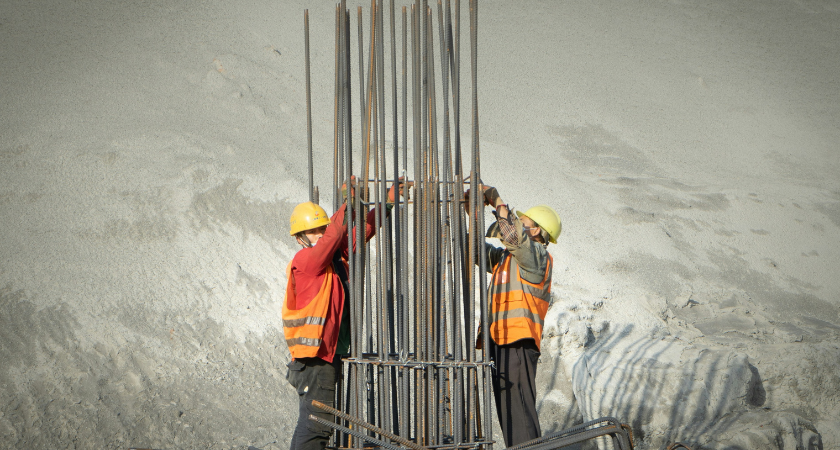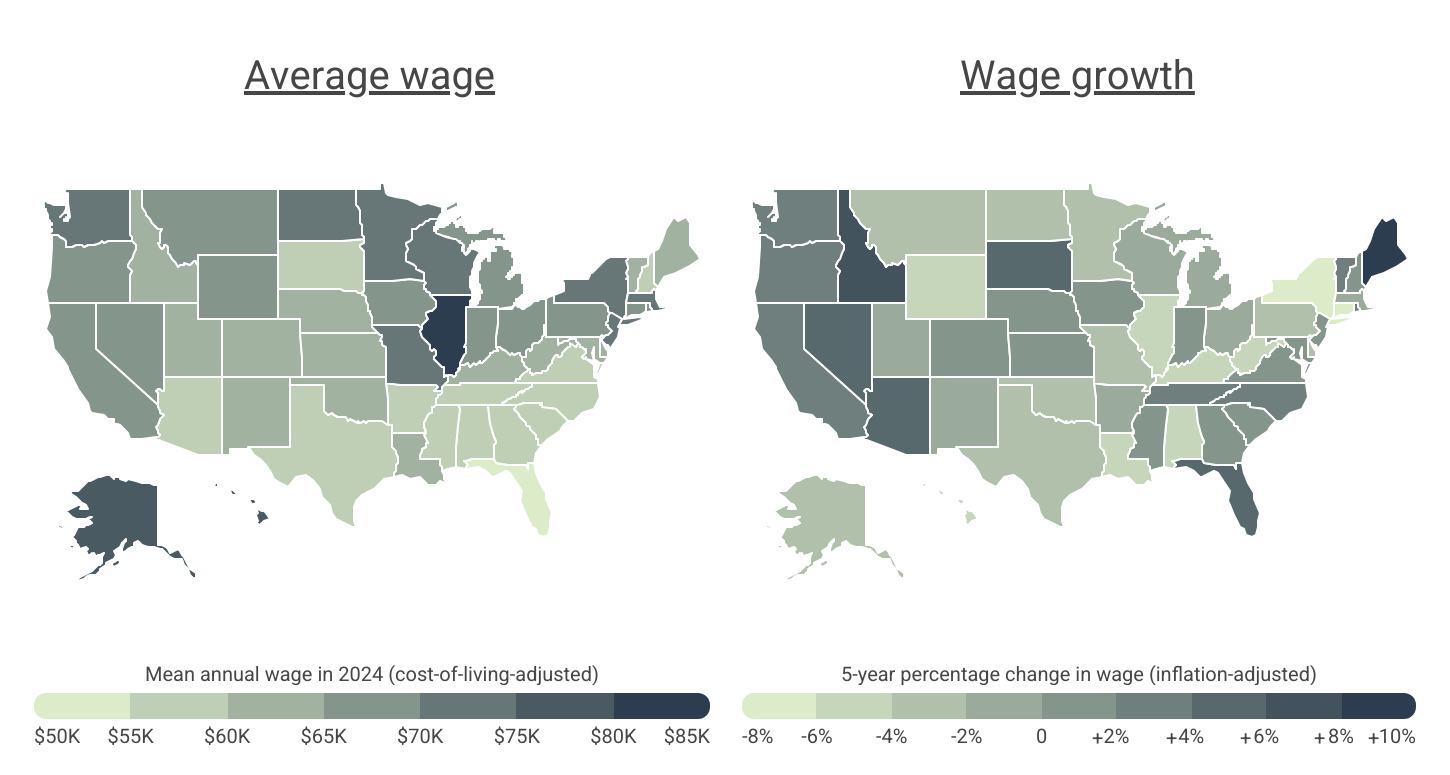
Despite signs of softer demand in parts of the construction sector, the labor shortage persists across the U.S., including in states like Texas where wage trends offer a mixed but notable picture. Industry estimates from the Associated Builders and Contractors (ABC) show that 439,000 additional workers will be needed in 2025, only slightly down from the 501,000 required in 2024. The reduced forecast reflects slower growth in commercial development and residential building as interest rates continue to impact financing and demand.

Even with that shift, labor shortages remain a major constraint. Surveys show that nearly 80% of contractors continue to struggle to fill skilled positions, pointing to long-term challenges such as:
Construction Coverage analyzed newly released Bureau of Labor Statistics (BLS) data to shed light on where wages are actually rising the fastest, both nationwide and within Texas.
In 2024, construction and extraction workers earned an average annual wage of $63,920 — a 21.6% jump from 2019 in nominal terms, but a 0.9% decline after adjusting for inflation. Workers are earning more dollars, but their purchasing power has dipped slightly.
A spike in early 2025 was short-lived. Wages declined 6.2% between Q1 and Q2, dropping from $1,096 per week to $1,028. Inflation-adjusted earnings slid 0.4% year-over-year heading into Q2.
From a five-year perspective (2019–2024), mean wages in construction failed to fully keep pace with inflation at the national level.

West Coast states—California, Oregon, Washington, and Nevada—showed the strongest combination of high wages and real growth, each topping $69,000 in cost-of-living-adjusted earnings and reporting 2.6%–4.5% real wage gains since 2019.
States with the highest adjusted pay overall include:
However, even high-wage states saw inflationary erosion—Illinois wages are down 5.7% in real terms over five years despite strong nominal gains.
Meanwhile, Maine led the nation in inflation-adjusted growth, up 9.2% from 2019 to 2024, followed by Idaho (+6.0%), Florida (+5.8%), and South Dakota (+4.6%). Roughly half of U.S. states, however, saw net wage declines when accounting for inflation.
While statewide averages have been squeezed by inflation, some construction roles in Texas have significantly outpaced the trend. The fastest-growing occupations include:
These gains demonstrate how select trades can leverage labor scarcity into wage growth, even as the sector experiences a modest pullback in hiring and spending momentum.
Salary increases are necessary but insufficient to solve the ongoing workforce crisis. Persistent headwinds — from limited training pipelines to an aging skilled workforce — require broader workforce development strategies. The slow but steady wage improvement in certain trades signals where contractors may be willing to pay more to stay competitive.
For further breakdowns, methodology, and national comparisons, readers can refer to the full Construction Coverage report.
Originally reported by Construction Coverage in El Paso Inc.